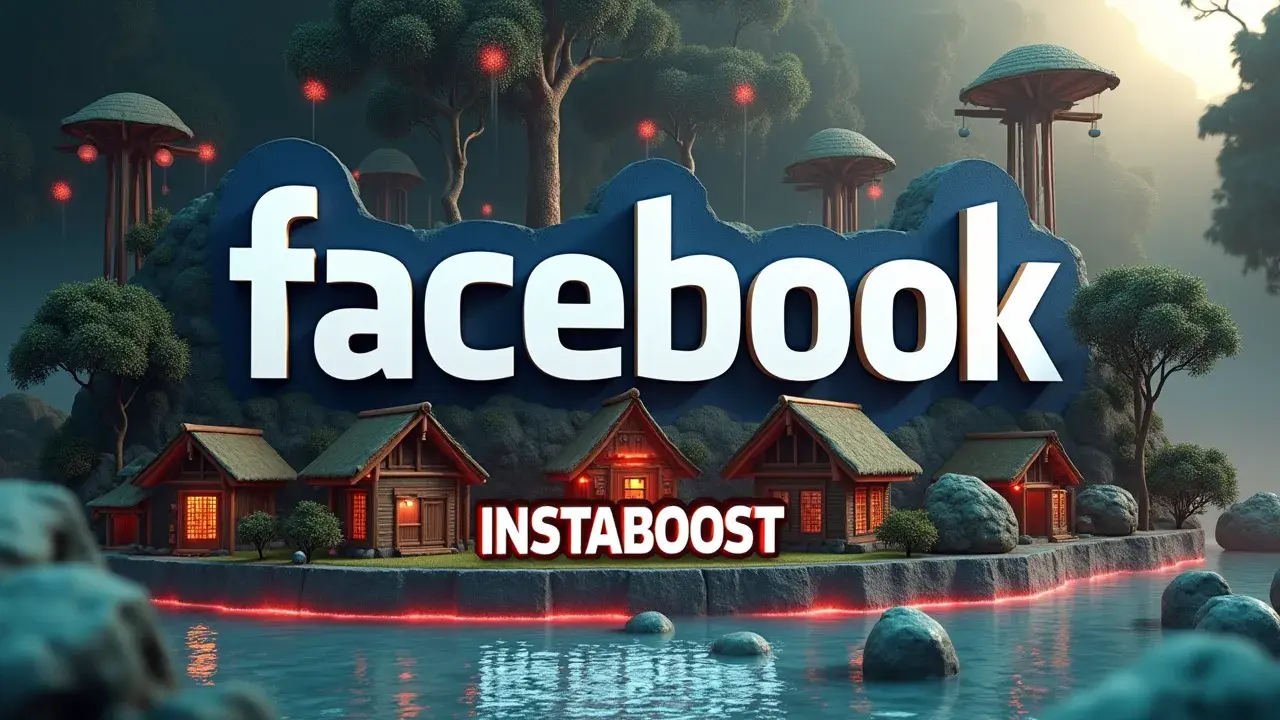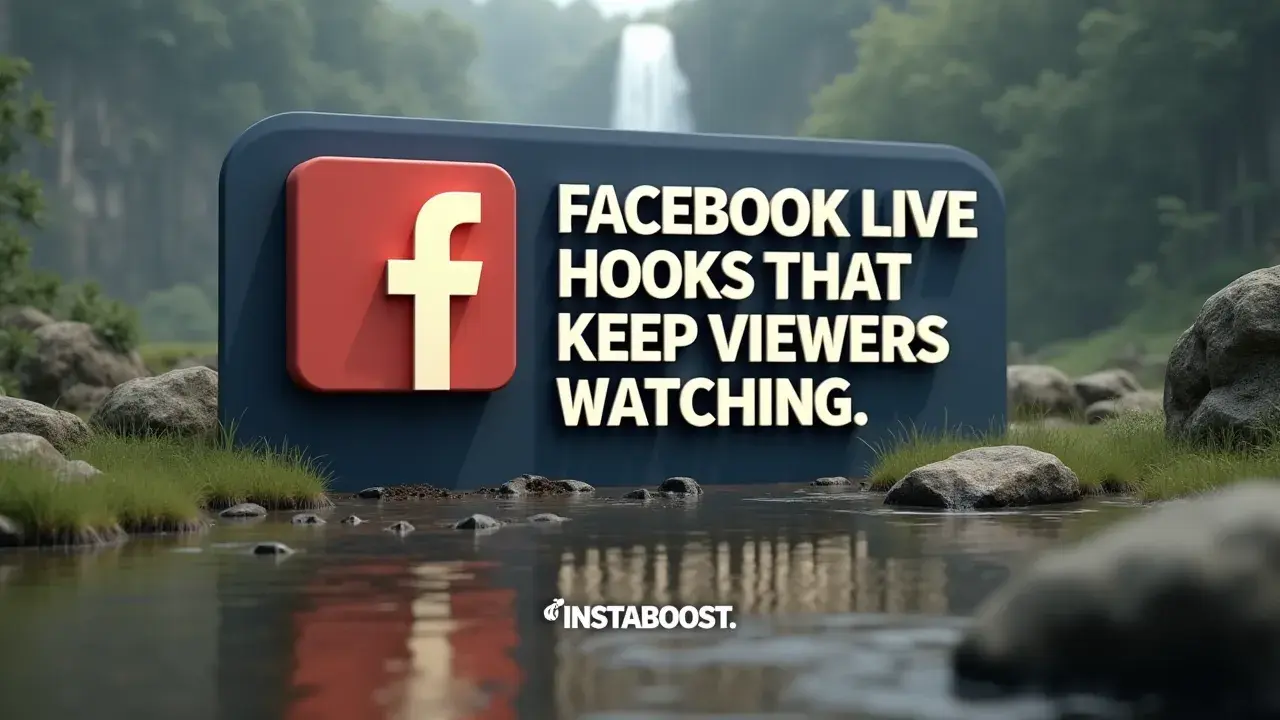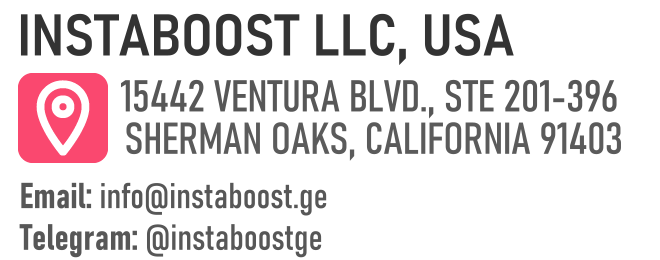How Do Facebook Live Hooks Keep Viewers Watching?
Hooks work by setting expectations early and reinforcing curiosity throughout the stream. A clear promise in the first minute frames value, then brief teases before each segment maintain momentum and stabilize watch time. If overused or vague, hooks can feel manipulative, but consistent, specific beats create trust and help each stream feel worth staying for. The smart path is rhythm: concise promises, timely teases, and steady delivery to support growth.
Why Certain Facebook Live Streams Command Attention
Some Facebook Live videos really hold your attention – not because they have special effects or famous faces, but because they feel immediate and relevant. That doesn’t happen by luck. There’s some real thought behind it: an understanding of what gets people to pause their scrolling and stay a little longer.
The people who are good at this know that the first few seconds count the most. They open with something direct – a question that makes you think, a comment that’s a little unexpected, or a reference to something people are already talking about. It’s not about shouting for attention, but about showing early on that you have something worth someone’s time.
These opening moments work because they lean on familiar ideas from psychology, like how people notice something new or different, or how we pay attention when there’s something useful for us. I’ve noticed that when you pay attention to these small details, you start to almost intuitively optimize your Facebook presence in ways that make people stick around. There’s also a lot of attention paid to what’s happening in real time: watching comments roll in, picking up on what viewers care about, and adjusting as you go.
When people see that you’re actually listening and responding, they’re more likely to join in, and that’s often how a random group of viewers starts to feel more like a community. When I think about the live streams that last or feel memorable, it’s not just the topics they cover. It’s how they use these little tools – hooks, responses, a sense of who’s watching – based on a real understanding of how people act online and what brings them back.
When people see that you’re actually listening and responding, they’re more likely to join in, and that’s often how a random group of viewers starts to feel more like a community. When I think about the live streams that last or feel memorable, it’s not just the topics they cover. It’s how they use these little tools – hooks, responses, a sense of who’s watching – based on a real understanding of how people act online and what brings them back.

A Test That Changed Everything I Knew About Hooks
It’s strange to think that all of this started with one test I almost didn’t bother running. I was getting ready for a Facebook Live, something I’d done many times, and decided, without much planning, to open differently. Instead of my standard introduction, I went straight into a question I figured a lot of people were probably thinking about, even if they wouldn’t say it out loud. Right away, there was a change – average watch time shot up by over 40%. That got my attention, so I tried it again, tweaking the opening line here and there or sometimes jumping into a quick demo before saying who I was.
Every single time, I saw an increase in how long people stayed. It started to sink in that it wasn’t about how polished or lively I sounded; it was about whether I managed to catch someone’s interest in the first few seconds. After that, I got pretty methodical about it, testing out quiet changes in my intros while keeping an eye on the analytics. Whenever engagement went up, I could trace it back to a sharper, more direct start. I started noticing which phrases, questions, or quick visuals actually made people pause and take a look instead of scrolling past. Even the little things – like noticing when someone would buy Facebook followers instantly and how that stacked up against genuine engagement – became data points in understanding what really grabs attention.
What I found is that good Facebook Live hooks aren’t random – they come from really noticing how fast people decide if they want to watch or not. That first experiment made me rethink the beginnings of my streams. Now, whenever I’m about to go live, I find myself thinking a lot more carefully about those first few seconds, almost like waiting to see if something clicks.
Strategic Timing: Where Hooks Meet Human Attention
Strategy isn’t worth much unless it works in the real world. You can spend plenty of time making plans, but if you don’t pay attention to how people actually watch Facebook Live, your plans fall apart pretty quickly. Most people tune in while they’re doing other things. They’re scrolling through their phones, letting notifications interrupt them, maybe only half-listening. A catchy phrase helps, but it’s not enough.
The timing matters more – those few seconds when someone’s thumb hovers, and they’re trying to decide if your stream deserves another moment. The hosts who do well with Facebook Live seem to know this. They don’t waste time with long openings or slow setups. Right at the start, they say something clear and direct, something that can cut through the usual busyness. They pay attention to when people are most likely to watch. They notice which topics actually get people to comment, and they see how quickly viewers tune out if they’re bored.
Some hosts even adjust what they’re doing on the fly – if they notice people drifting, they’ll respond to a comment or change their pace a bit. It’s interesting how small things, like a sudden spike in engagement or even a chance to boost Facebook credibility with likes, can shift the energy of a stream. It’s a mix of noticing patterns and reading the room, but also staying open to what’s happening in the moment. So when it comes to strategy for Facebook Live, it’s less about a fixed plan and more about staying alert and ready to shift, meeting people where their attention really is.
Vanity Metrics vs. Real Connection
If I’m being honest, a lot of my engagement comes from my mom. It’s easy enough to get a first like or a comment from someone who already supports you, but Facebook Live feels different when you realize most people don’t have any reason to watch at all.
For a while, I paid too much attention to the little things – those hearts floating up, the view count ticking higher. There was even a time I wondered if it would help to buy cheap Facebook views, just to see the numbers climb and maybe catch someone’s eye. But that only got me so far.
If the only people reacting to my videos are already in my corner, am I really reaching anyone new? I think a good hook isn’t about being flashy; it’s about saying something that gets through to people who were never planning to stop and watch in the first place. I’ve read plenty of advice that says you should focus on boosting numbers, but I don’t think that’s what actually makes people stay.
When I focused on making a real connection, talking directly to anyone who happened across my stream instead of trying to impress the algorithm, the conversations changed. The numbers sometimes dipped, but then I started seeing more replays, people asking real questions, or quietly sharing the video with someone else. It isn’t as satisfying right away as watching the like count jump, but it feels different. Now, when I look at my hooks, I have to wonder who I’m really speaking to – am I still hoping for quick reactions, or am I giving someone a reason to actually listen?
Closing the Loop: Transforming Endings into New Hooks
It’s easy to think of endings as a way to wrap things up, but I keep noticing that how you close a Facebook Live stream actually shapes what comes next. I’ve seen a lot of people say goodbye or toss out a quick thanks, like they’re checking the box, but that’s often where you can plant the idea of next time. If you give a hint about what you’re planning or even ask a specific question – something you really want to hear about – it’s more likely people will be interested in coming back. They’re not left with a vague “see you soon,” but with something to think about or look forward to.
There’s something about a stream ending with an open loop, like mentioning a story you’ll finish later, that sticks with people. It’s not about chasing numbers or doing tricks to get more shares on Facebook; it’s more like building a habit of trust, where people feel you’re really showing up for them and the conversation keeps evolving. Signing off starts to feel less like closing a book and more like leaving a bookmark in it, saving your place for when everyone returns. Not everyone will notice right away, but over time, those little signals add up, and people start to expect something real will always be waiting for them next time they stop by.
The Psychology of Micro-Rewards in Live Engagement
What usually keeps people watching a Facebook Live isn’t so much the show itself, but how you notice the people who show up. When someone leaves a comment, hits a reaction, or even just sticks around, there’s this hope that you’ll see them. I’ve seen streams where something as simple as a row of Facebook reactions that convert can shift the whole energy in the room, especially when the streamer acknowledges it in real time. The streamers I’ve paid attention to tend to catch these moments – they reply right away, say people’s names, or follow up on things viewers mention.
It doesn’t have to be a big gesture, but when you answer a question or mention someone out loud, it does something. It tells people they’re actually in the room, not just watching from the outside. And it’s not really about chasing higher numbers or ticking off engagement metrics – what matters is that people feel like their presence counts for something. I’ve noticed that the more this happens, the more the platform itself seems to play along, showing your stream to new folks. Over time, this back-and-forth starts to build up. People stick around longer, more new faces show up, and the stream begins to feel less like a broadcast and more like a group of people hanging out. The thing that keeps people coming back isn’t a slick intro or perfect lighting, but this small, regular habit of paying attention and responding. That’s how you end up with people who aren’t only passing by, but who actually want to be there, even if only for a few minutes.
The True Source of Effective Live Hooks
To be honest, the way I do things now didn’t come from some big insight – it came from dealing with a lot of trial and error. When you’ve been in the middle of it – starting Facebook Live videos that barely anyone watches, trying to answer questions while your camera acts up, losing track of your point halfway through – you realize that trust doesn’t come from being slick or having a perfect script. It really comes down to showing up, paying attention to what people actually respond to, and being willing to change things if your plan isn’t landing. The hooks that ended up working for me usually weren’t the ones I read about.
They showed up after I watched the numbers in real time, listened to what people were saying in the comments, and figured out how to keep going when a session didn’t go well. There are articles out there about ways to drive more Facebook engagement, but in my experience, it’s the little shifts – like noticing which questions actually get answers in real time – that make the difference. So, when someone asks how to keep people watching, I talk about patterns I noticed – being prepared helps, but flexibility matters more, and it’s important to ask the kind of questions that people actually want to answer.
There’s some reasoning for why people click “Like” or stay tuned in, but really, there isn’t a shortcut for building trust. People respond to consistency, actual attention, and a sense that you’re not pretending everything’s perfect – you’re just getting a bit better at handling whatever comes up. If you want people to return, it’s not about being naturally charismatic. It’s more about treating each awkward or confusing moment as something to learn from, instead of a reason to quit, and after a while, those lessons start to shape how you do things the next time around.















